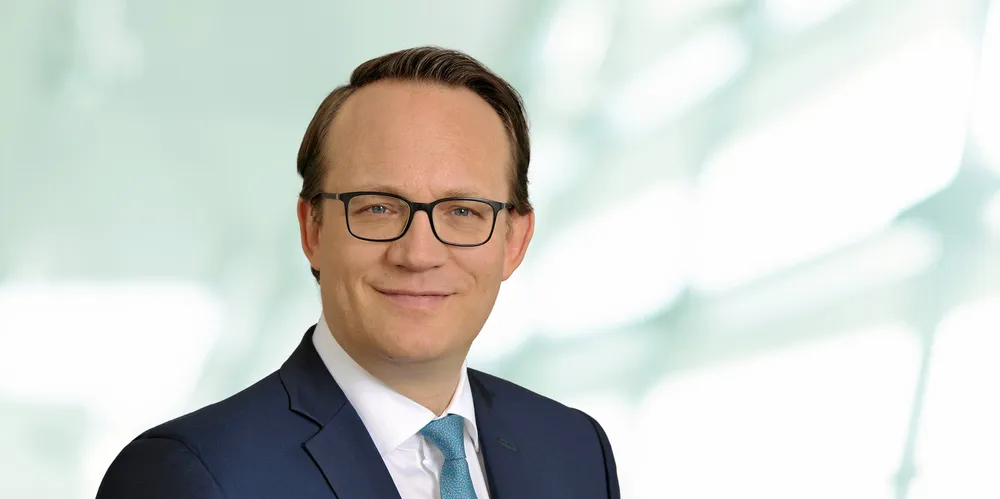RWE to spend $60bn on 30GW of new green projects by 2030
German energy giant to boost offshore and onshore wind, solar, storage and hydrogen capacities as part of updated strategic plan that is slated to bring overall ‘green’ capacity to 65GW

RWE has earmarked €55bn ($60bn) for green technologies through the end of the decade – with a strong focus on solar, battery storage and offshore wind – the German energy giant said at its capital markets day.
The bulk of the investment is going into onshore and offshore wind, as well as solar, while the company is also planning to step up its energy storage and hydrogen businesses as part of its updated strategy.
The utility plans to boost its green portfolio (including hydrogen-ready gas-fired power) to more than 65GW in net capacity by 2030, up from 35GW at the end of September 2023. RWE had already spent €20bn during its ‘Growing Green’ programme in place since 2021, which increased capacities by 9GW.
“Thanks to our significant financial headroom, our attractive project pipeline and our extensive expertise, we are in an excellent position to continue to accelerate our transformation, even in the current challenging environment,” CEO Markus Krebber said.
“In the coming years up to 2030, we want to invest €55bn worldwide in renewable energy, batteries, flexible generation and hydrogen projects.
“We are growing green and increasing our earnings while decarbonising our portfolio even faster – in line with the 1.5-degree pathway and our goal of becoming net-zero by 2040.”
The company currently has 100 projects totalling 7.8GW under construction in 10 countries, and said it will concentrate on investments with the most attractive risk-return profile. Renewables account for three-quarters of the planned spending, with the remainder to be invested in batteries, flexible generation (meaning hydrogen-ready gas-fired power plants) and hydrogen projects.
RWE said it will continue to focus on industrialised countries, particularly on its German home market, the US and the UK, while also growing in other European core markets and selected Asia-Pacific countries such as Australia, Japan and Korea.
More than half of the planned spending is earmarked for Europe, with about €11bn for Germany alone in the coming seven years.
RWE plans to invest 40% of the planned €55bn net in the expansion of onshore wind and solar. The installed capacity in the onshore wind sector is set to grow from 8.6GW today to 14GW by 2030, with solar slated to expand from 3.9GW to 16GW.
About "70% of our portfolio currently consists of onshore wind. We will increase our solar share significantly in the coming years," Krebber told investors.
"In 2030, we have set ourselves a target to operate, 14GW of onshore and 16GW of solar. ... Strategically we have put a lot of effort into solar and batteries where we see the largest pipeline increase."
'Not one offshore project with financial difficulties'
Another 35% of the funds are earmarked for offshore wind projects, which is expected to boost the company’s capacity in wind at sea from 3.3GW today to 10GW in 2030.
Krebber stressed that "not one project in the [offshore wind] pipeline" has hit financial difficulties, not even in the US.
As RWE's pipeline is very large, it "allows us to be highly selective and to choose those investments with the most attractive risk-return profile," the CEO argued, adding that the Sofia project in the UK and the Dublin Array project off Ireland are count on inflation-linked contracts for difference (CfDs).
"For our entire 1.6GW German portfolio, we do not have to pay any lease payments," Krebber said.
The capacity in batteries is set to increase from 0.5GW to 6GW by 2030. The construction of at least 3GW of hydrogen-ready gas-fired power plants and 2GW of electrolyser capacity is also planned.
“Our investment and growth programme is fully financed until 2030. We cover around 80% of our financial requirements from the strong cash flow of our profitable operating business,” chief financial officer Michael Müller said.
“Thanks to our attractive investment grade rating, we also have access to the debt capital market at all times. RWE shareholders are also set to benefit from our earnings growth. We plan to increase our dividend by 5% to 10% every year.”
The company expects its green growth strategy to deliver very attractive returns, and sees earnings before interest, taxes, depreciation and amortisation (Ebitda) rising to more than €9bn by 2030, up from €2.8bn in 2021.
Net profit is expected to grow by 12% in that period, to €3bn in 2030, up from €1bn in 2021.